Hard Lessons and the FLW Cup
Rookie Tour pro Miles Burghoff reflects on his first season, what could have been and Lake Hamilton

Sometimes the best lessons are learned the hard way. You know, like having a bad tournament and losing the Angler of the Year lead, then having another bad tournament and losing the Polaris Rookie of the Year lead, which you held basically all season.
That’s the kind of pain Miles Burghoff had to deal with this season on the FLW Tour. The young pro was atop both point races with two tournaments left to fish, then posted finishes of 117th at Lake Chickamauga and 121st at Lake Champlain to fall short of both.
To be frank, those final tournaments were total bombs. Burghoff admits it. He didn’t “work the process” correctly, and he paid a hefty price.
But maybe the price was worth it. Burghoff thinks it was.
With the benefit of hindsight, he’s been able to determine what he did wrong in the last two tournaments, and now he knows how to avoid the same type of crash in the future.
Today, a little wiser and certainly more prepared, he’s applying hard-earned lessons from the season to practice for the FLW Cup at Lake Hamilton, where he let me ride along for a few hours Tuesday morning to talk bass fishing and big Cup dreams.
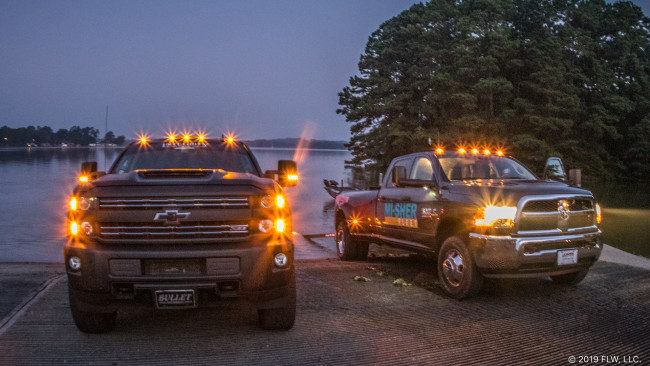
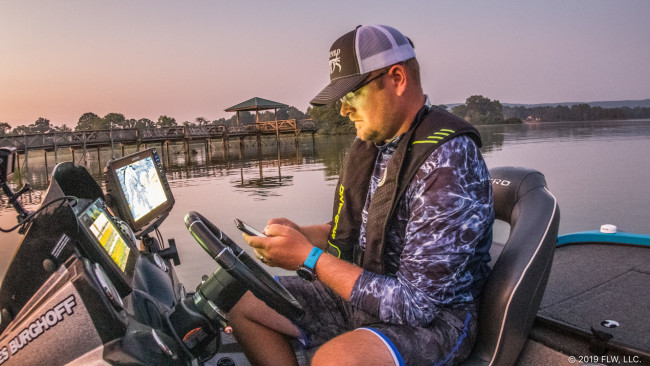
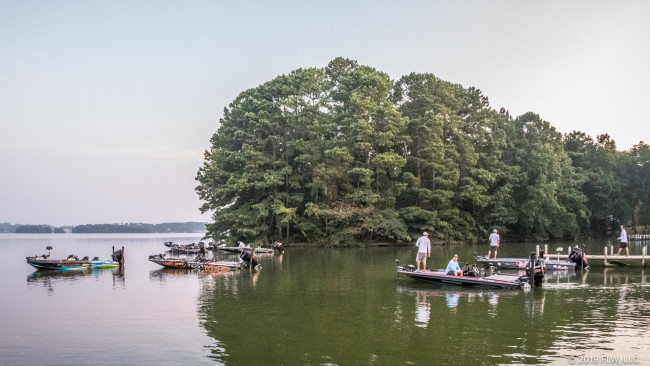
Burghoff and Buddy Gross are the first Cup contenders to drop their boats in at the Andrew Hulsey State Fish Hatchery ramp at about 6 a.m.
A dozen more pros file in after them. The anglers can’t start fishing until 6:25, so most of them float around by the ramp, making small talk and rigging rods.
Burghoff’s gear is fully ready. He uses the time to chat about his plan for the morning and update his Navionics chip with the freshest data.
“It’s hard not to focus shallow when you have low light,” he says. “I think that’s what we’re going to do is run up one of these big creeks.”
At 6:25, Gross confirms with his fellow pros that it’s time to go, and the pack scatters out into the waters of Hamilton.
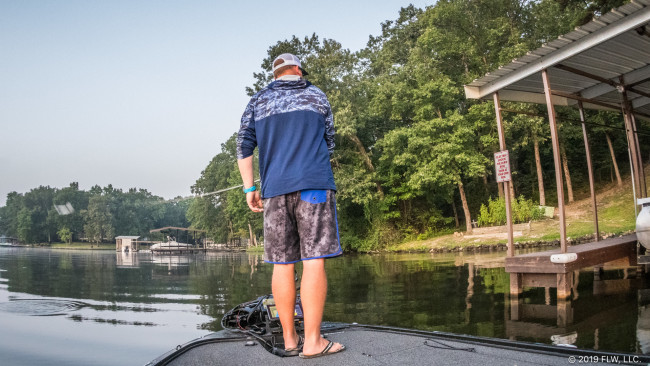
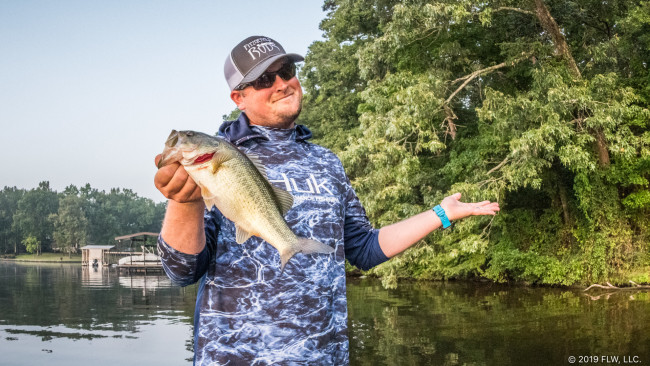
Burghoff prefers to fish shallow water wherever he goes. That’s how he starts things off this morning, slinging a buzzbait around some docks in a shallow creek.
After two days of practice, he’s confident he can get bites early in the morning by running this program, but then the shallow bite always dries up when the sun gets high. So this morning he’s trying to decipher a more efficient shallow pattern and figure out where it fits into a game plan that will likely include a lot of offshore fishing.
“I caught a good one, like a 3 1/2, on the first day shallow,” Burghoff says. “The question is, in a championship format, are you just going for bites, which I can get shallow, or, if you have a good deep spot, do you want to start on the juice?”
The shallow bite certainly looks OK when he puts a nice keeper in the boat.
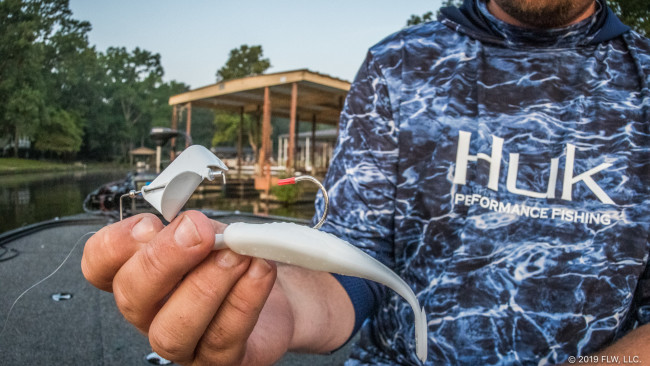
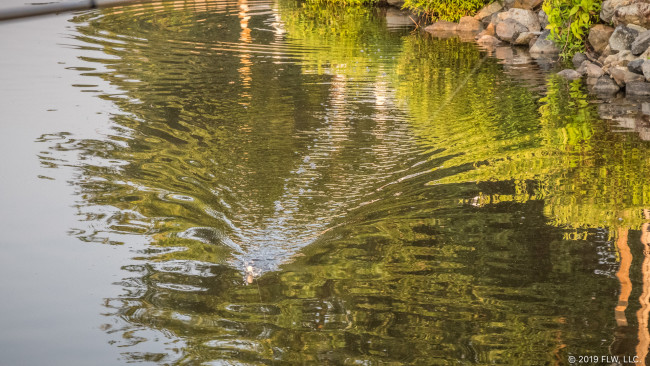
Another bite prompts Burghoff to cover his buzzbait’s hook. He likes to catch a fish or two in new areas to gauge the size and condition of the bass, but after that he tries not to stick anymore. This time of year, you can’t really expect the shallows to replenish, so every fish educated in practice is one less to catch in the tournament.
That’s just one of the reasons why he’s skeptical that the shallow bite alone can win the Cup.
“I like to fish shallow, and that’s how you position yourself to do better in a championship tournament is to fish your strengths … if you can separate yourself,” he says. “But if everybody is throwing buzzbaits, how do you separate yourself?”
Burghoff runs further up the creek and fishes his way back until it narrows into a small channel. There’s less shad here, so he swaps to a bluegill-imitating frog and keeps chucking away. It takes maybe three casts before a small bass takes a crack at it and misses.
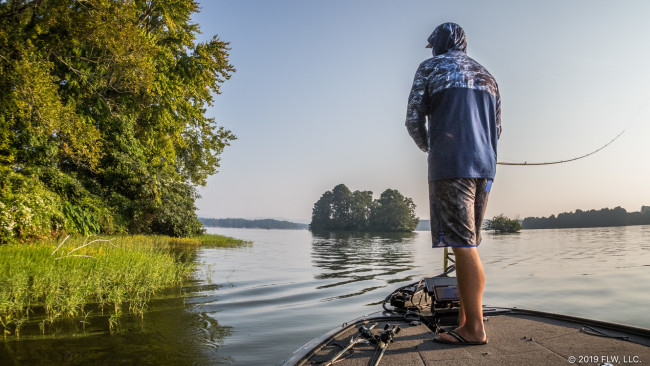
The Tennessee pro gives this creek a few more minutes before making a move to a new area studded with long points and real pretty bank grass.
“Wow, this grass looks awesome,” he says as he fires a toad to the edge of the stalks.
Burghoff keeps a steady pace. He’s constantly scanning for bait and just trying to get a fish to show itself so he knows what lives here. The first point doesn’t give him much “feedback.” He doesn’t hear a bluegill pop the surface. Nor does he see a bass.
“Oddly enough, I’m getting more feedback from deep fish because I can watch them on my graph,” he says. “I’ve already proved you can catch fish up shallow. I just don’t think that’s going to be the deal exclusively. I think you’re going to have to mix it with something else.”
It doesn’t take Burghoff long to fish the adjacent pocket and make his way back out, switching back to the buzzbait in the process.
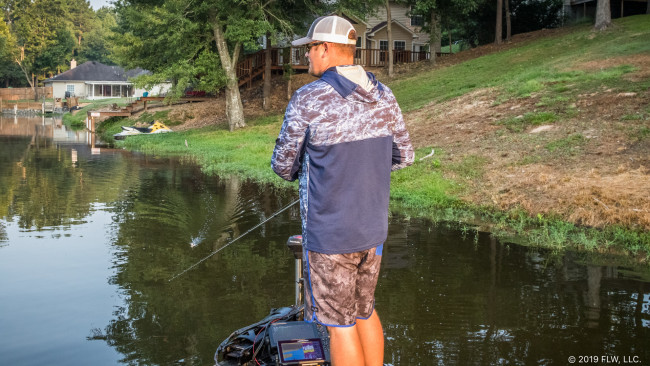
Since Champlain, Burghoff has been busy. He worked for his sponsors at ICAST in Orlando in July, then flew to Alaska for his 15th season of guiding for halibut and salmon, a job that he credits with starting him on the path to success in pro bass fishing. Alaska is where he developed his work ethic and learned how to work with people.
He says he’s also spent a lot of time reflecting on the 2019 Tour season.
“Obviously, I can’t complain too much,” says Burghoff, pausing when a 2 1/2-pounder stops his buzzbait in its tracks. He quickly makes a waypoint on his Lowrance. “That’s a really good one on this lake right now.”
The pro takes a couple seconds to straighten his buzzbait trailer then continues: “I had a really good year. I did a lot of things that a lot of people would wish that they did in a rookie season, but I didn’t accomplish my personal goals. Yeah, I wanted to win Rookie of the Year. That was a goal I set for myself early in the season, but it was actually a good thing that I didn’t win it with the way the last two tournaments went. Because the last two tournaments, I didn’t practice very well. I didn’t have a good game plan.”
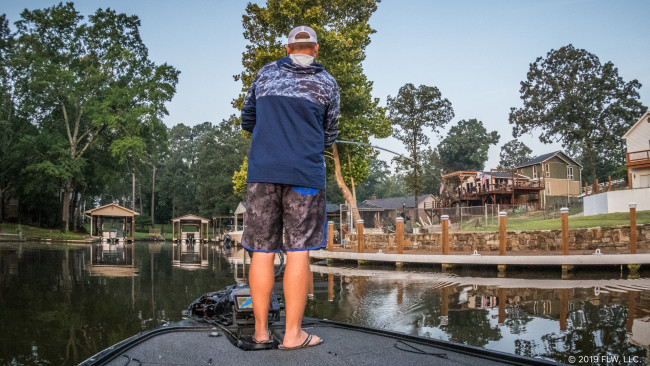
As he talks, Burghoff continues to whip his buzzbait into corners around docks and up to seawalls, plus along any bank grass.
He’s testing everything and trying to expand on what worked the first two days.
“In multi-day events you want to have several plans going into the tournament, but also be flexible enough to throw all of those away if need be based on the conditions,” Burghoff explains. “In those tournaments [Chickamauga and Champlain], I stuck with one game plan, doing one thing, and it killed me. At Chickamauga, it was the females moving out of my areas after the spawn. At Champlain, it was all about falling water completely killing the frog bite as time went on. And so I put myself in the right areas and did the right techniques to do well at both of those events, but I really needed a good kick in the butt to recognize that I was making some mistakes.”
Losing out on Rookie of the Year was a monster kick in the butt. Yet, Burghoff believes that not winning was actually more valuable to him in the long term, because otherwise he might not have realized he was making critical mistakes in practice. Even earlier in the season, he says there were tournaments where he only had a Plan A, but Plan A happened to hold up, so he didn’t realize how much risk he was taking.
They say you learn more from failure than success, and in this case, that’s true.
“On stage at Champlain, I said, ‘Learn how to embrace the suck. Learn how to embrace doing terrible.’ I really don’t want people to think I like failing and stumbling like that. But I like the fact that when you stumble that hard, you can kind of reflect and know what you did wrong. As opposed to some tournaments where you just miss a check, and you have no idea what you could’ve done different.”
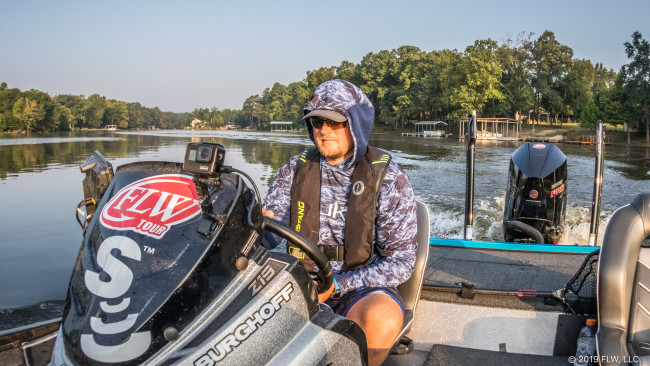
Burghoff’s lesson cost him ROY this season, but it’s guiding him this week. He knows he needs a Plan B, C and D.
That in mind, he reaches into his rod locker to grab a couple more rods and motors out into the main basin to start searching offshore.
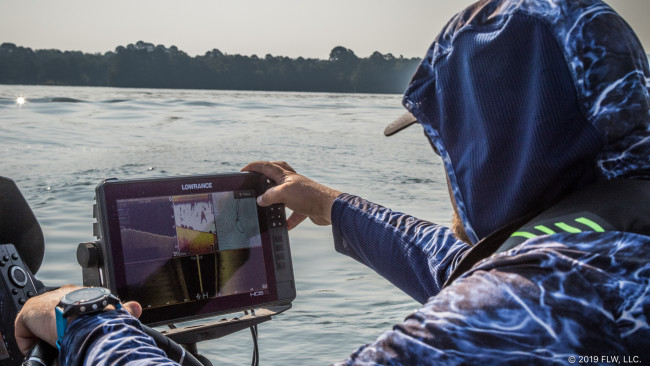
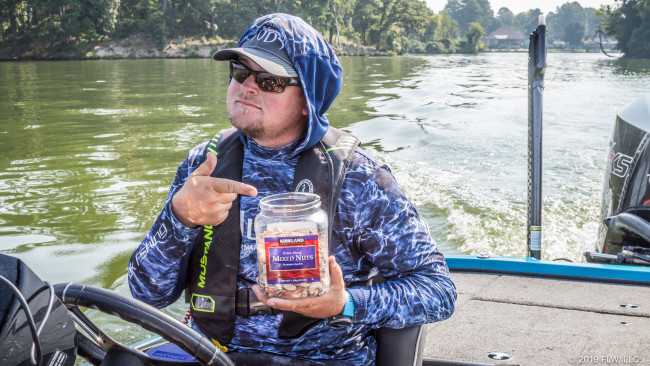
It doesn’t take long to find brush. Hamilton has a ton of it. Burghoff snacks on mixed nuts as he scans around for about 10 minutes on some obvious structure, quickly locating a nice pile.
Not surprisingly, he isn’t alone in this area. The best sections of the lake for fishing brush piles are going to fish small this week. Currently, there are five other pros within sight.
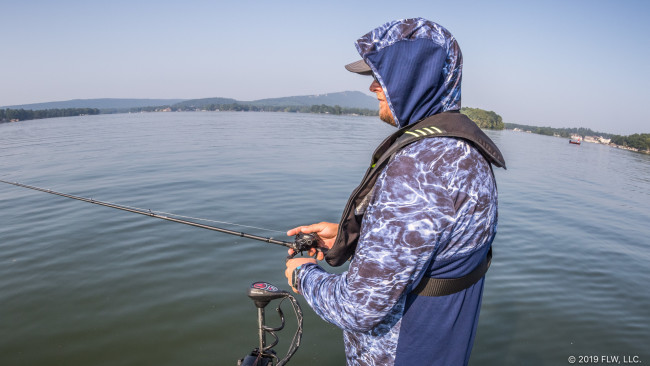
After idling over the next pile, Burghoff hops up on the front deck to take a shot at these fish. He’s relying heavily on forward-looking sonar to help level the playing field between him and other pros with more experience finding and fishing isolated brush.
It’s cool technology. He can actually watch his bait fall into the brush.
“That’s why I think someone like me who’s not used to doing it can figure it out,” he says.
Getting them to bite is the hard part. These fish have been fished for. They’ve been driven over. They’re picky. Burghoff doesn’t get a bite on this pile, then tries a couple baits on the next pile and gets one bass to slap at his second offering. He never does hook up.
At the next spot, the surface erupts with activity. At first, it looks like a pod of schooling bass. A 4-foot gar that’s as thick as Burghoff’s bicep rolls next to the boat and proves us both wrong.
“Yeah, these are all gar,” he says. “I found the gar hole.”
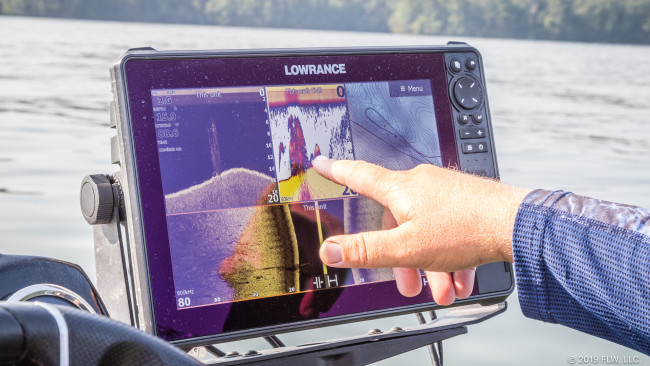
The next 30 minutes are spent in high-speed search mode. Burghoff marks some brush and stops to fish a pile with some fish perched in the top of it. He still never boats a bass.
“I’m going to learn so much about fishing brush in this tournament,” he says. “I already have.”
Another pile is so big that he can’t resist making a few casts. Again, he never gets a sniff, but he does find an interesting clue when his bait snags and hauls back some green leaves. This is a fresh pile.
“No wonder it looked so big and bushy,” he says.
When he fails to catch a bass on the next brush pile, Burghoff decides to test a theory. His suspicion is that the fish might be reluctant to bite after they’ve been graphed, so he swings by a pile that he marked earlier in practice and avoids driving over it.
This seems like a good strategy: Creep up slowly, use the forward-looking sonar to dial in the pile’s location, then toss a bait right in it.
The fish aren’t having it.
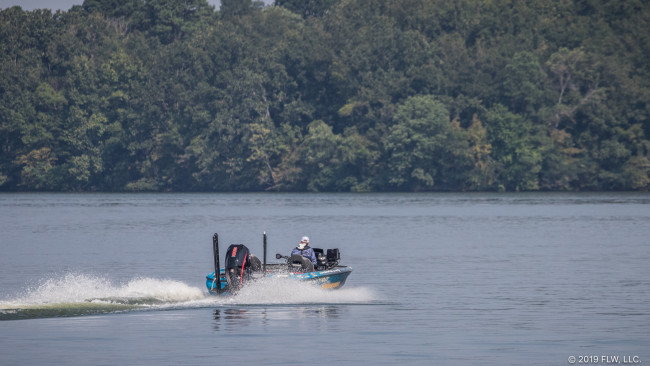
It’s about 10:30 now, and I can tell Burghoff is ready to switch gears into a faster search mode. His plan is to work up the lake doing more of the same. The goal is 150 waypoints. He needs that many because of the pressure he expects to encounter. Burghoff also hopes to dial in a pattern within the pattern so he can be more efficient when deciding which piles to fish.
I’m pretty sure my constant questioning is only going to be a distraction, so I have the pro drop me off back at the dock a little early. I’ll go find some air conditioning, and he’ll go back to work.
Before the day started, I wondered if the Tennessee pro might approach this tournament as somewhat of a redemption tour, but he’s made it clear that’s not at all what he has in mind. He’s not interested in redemption. In fact, he’s not interested in having any goal beyond what he tries to do every time out: Work the process, plan wisely and give himself the best chance to win.
If he does that, and it’s his time, then he’ll have a shot. And that’s all he wants.